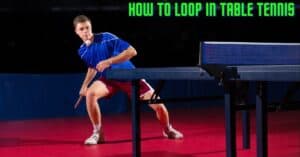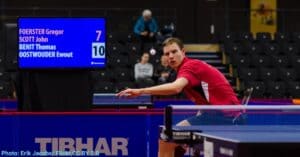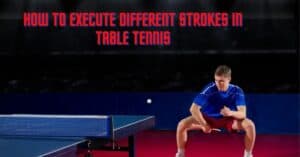The flick, an essential offensive stroke in table tennis, transforms defensive positions into opportunities for attack. This is a very effective shot that often brings good results. I feel amazed to watch how effectively Lin Yun Ju (a top Chinese Taipei player) uses the banana flick on the low heavy backspin short serves. Performed close to the table, this quick and compact motion with the wrist action forces opponents on their backfoot. Given its effectiveness, understanding the flick is important for those aiming to elevate their table tennis game.
Flick Shot in Table Tennis
A flick shot, also known as a flip shot, is an attacking stroke performed typically on short balls that land close to the net. This technique is not for a single bounce serve, but for a double bounce serve that lands near the net on the table.
This technique can be executed on both the forehand and backhand side. It involves a quick snapping motion of the wrist and a slight rotation of the forearm, aiming to strike the ball just after its bounce.
The banana flick, a variant of the backhand flick shot, is a more advanced technique, that involves more brushing by using the wrist action. Despite its complexity, the banana flick shot is quite popular among experienced players.
How to Do a Forehand Flick?
A forehand flick, also known as a forehand flip, is an aggressive return stroke used in table tennis to respond to short balls. Here are the step-by-step procedures for executing this offensive shot.
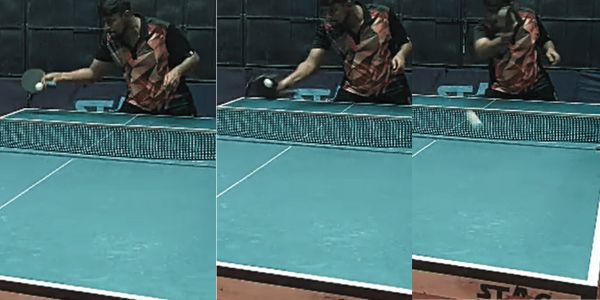
Position Yourself
- Stand close to the table. Your feet should be shoulder-width apart for balance.
- Move your right leg (if you are a right-hander) forward.
- Lean forward to get your body close to the ball so that you have total control when hitting the flick shot.
Prepare Your Racket
- Your racket angle depends on the type of ball you receive.
- If it is topspin, your racket should be slightly closed.
- If it is a short backspin, the racket angle is slightly opened.
Use Your Wrist
- The power of the flick comes from your wrist.
- Perform a quick, snapping motion with your wrist to flick the ball.
Strike the Ball
- Keep your eyes on the ball as it approaches.
- You need to hit the ball on the top of its bounce.
- Flick is a short-arm action. You don’t need a big backswing.
Follow Through
- After hitting the ball, follow through with your bat pointing in the direction you want the ball to go.
- You should end up following up to the net level.
Get Ready for the Next Shot
- Immediately return to your ready position to prepare for the next shot.
What is a Backhand Flick in Table Tennis?
A backhand flick, also known as a backhand flip, is an aggressive stroke used in table tennis to return short balls near the net that are slightly high. It is an important shot that allows players to attack short backspin serves. Here are the step-by-step sequences for executing backhand flick.
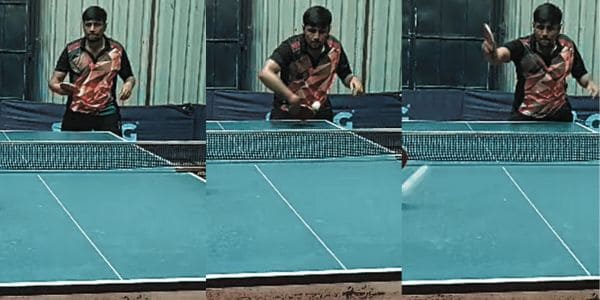
- Stay low and relaxed on your toes
- Position yourself by moving your right or left leg to get the ball in front of your body.
- Your acting upper arm and lower arm take a “V” shape against each other.
- Use your elbow as a pivot point. The position of your elbow should be outward at the start and inward at the end.
- Get your head and body close to the ball.
- Your wrist should be backward to point toward your body.
- The essence of the flick lies in a rapid, compact wrist motion. This snap generates the topspin needed to lift the ball over the net, adding an aggressive spin that can be challenging for opponents to return.
- Your brushing action depends on the amount of backspin. For heavy backspin, you have to increase your racket speed.
- To make brushing more effective, contact the ball on the upper half of your racket.
- Take the ball on the top of the bounce to make it easier to flick.
- Keep your wrist relaxed and flexible, allowing for a faster and more precise flick motion.
- Practice keeping your elbow close to your body while performing the backhand flick. This will give you better control over the direction of the ball.
Common Mistakes to Avoid
Even seasoned players can fall into the trap of mistakes when attempting flicks. By being aware of them, you can improve your consistency.
Overhitting
Flicks are meant to be sharp and quick, not forced. Attempting to overhit the flick can lead to errors.
Improper Body Positioning
Standing too close to the table or in an awkward position can lead to poor shots.
Incorrect Timing
Misjudging the timing of the flick can result in mistimed shots that lack effectiveness. Focus on making contact at the optimal moment to exploit the speed of the ball.
Ignoring Spin
Not considering the spin of the incoming ball can lead to miscalculations and ineffective flicks. Pay attention to the type of spin and adjust your brushing action accordingly.
Poor Footwork
Inadequate foot positioning can lead to poor balance and compromised body rotation, which are essential for generating power and control.
Related
